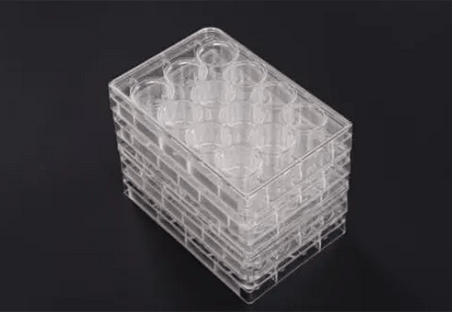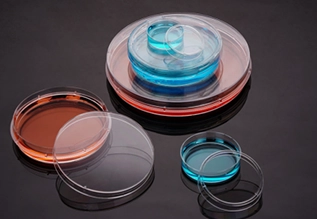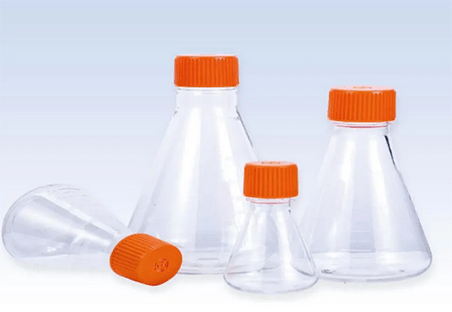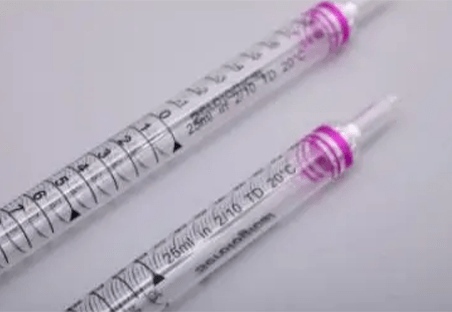In the realm of cell culture, the choice of the right vessel is critical for the success of experiments. Multiwell plates, often referred to as cell culture plates, are indispensable tools in laboratory research, designed to accommodate various experimental needs. They come in a variety of sizes and configurations, such as the 24-well plate, 6-well plate, 12-well plate, and 96-well plate. In this comprehensive guide, we will explore the world of multiwell plates, highlighting their significance, classifications, and applications.

What is Multiwell Plates?
Multiwell plates, commonly referred to as cell culture plates, are standardized containers designed to facilitate the growth and study of cells in a controlled environment. These plates consist of a plastic or glass base with multiple small, uniform wells, typically ranging from 6 to 384 wells, although larger formats are available for high-throughput applications. The most common formats include 6-well, 12-well, 24-well, 48-well, and 96-well plates. These wells are arranged in a grid pattern, making them suitable for parallel experiments and the cultivation of various cell lines in a single plate.
What is the Versatility of Multiwell Plates?
Multiwell plates are essential tools in cell biology research due to their versatility. Here are some of the key aspects that make them indispensable:
- High Throughput Screening: Multiwell plates are widely used in high-throughput screening (HTS) assays. Researchers can test multiple compounds or conditions simultaneously, making them invaluable in drug discovery and development.
- Cell Growth and Maintenance: Multiwell plates are ideal for the culture and maintenance of various cell lines. They provide a controlled environment for cell growth, making it easier to study cellular processes and perform experiments over extended periods.
- Assay Development: They serve as a valuable platform for developing and optimizing various cell-based assays, including cell viability, proliferation, migration, and differentiation assays.
- Microscale Experiments: Multiwell plates enable researchers to conduct experiments at a microscale, conserving valuable resources such as cells, reagents, and space in the laboratory.
- Consistency and Reproducibility: The standardized design of multiwell plates ensures consistency and reproducibility in experiments, which are critical in scientific research.
- Ease of Use: Their user-friendly design and compatibility with automated liquid handling systems make multiwell plates a popular choice for labs dealing with high volumes of samples.
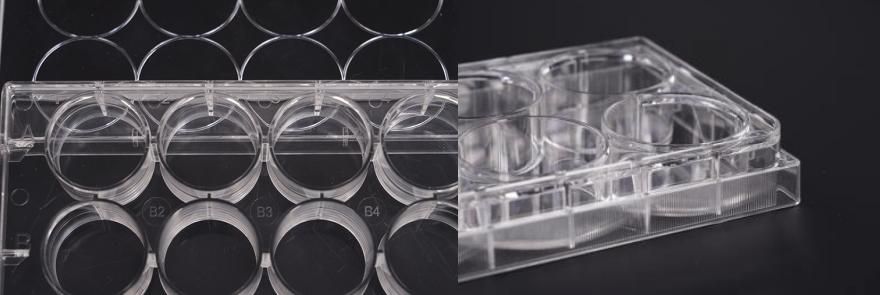
What are the Classifications of Multiwell Plates?
Multiwell plates, also known as microplates, can be classified based on various criteria, including their well geometry, size, and intended use. Here are some common classifications of multiwell plates:
1. From Well Geometry
- Flat-Bottom Well Plates: Flat-bottom wells have a smooth, flat surface at the bottom of each well. These wells are ideal for adherent cell culture, as they provide a stable surface for cells to attach and grow. Flat-bottom wells are also well-suited for microscopy and imaging applications.
- Round-Bottom Well Plates: These are the most common and have round wells. They are used in a wide range of applications.
- Square Well Plates: Plates with square wells are useful when the plate will be read in multiple directions.
- Rectangular Well Plates: Rectangular wells are elongated and are often used in specialized applications, such as electrophoresis, where longer samples need to be accommodated.
- V-Bottom Well Plates: These plates have V-shaped wells, often used for applications where the contents need to be easily recoverable, such as liquid handling or crystallization studies.
- U-Bottom or C-Bottom Well Plates: These plates have U or C-shaped wells and are used in specific applications, like electrophoresis.
2. From Well Size and Density
- 6-Well Plates: Plates with six wells, typically used for small-scale experiments.
- 12-Well Plates: Containing 12 wells, these are also used for small-scale studies.
- 24-Well Plates: 24-well plates are intermediate in size and density.
- 48-Well Plates: These plates provide a higher well density for higher throughput.
- 96-Well Plates: Commonly used in laboratory assays and high-throughput screening.
- 384-Well Plates: These plates have very small wells and are used for ultra-high-throughput applications.
3. From Well Volume
- Deep Well Plates: These plates have larger well volumes, suitable for applications that require more liquid, like cell culture or sample storage.
- Shallow Well Plates: Designed for smaller well volumes, often used in high-throughput assays to minimize reagent consumption.
4. From Material
- Polystyrene Plates: Commonly used for cell culture and various assay applications.
- Polypropylene Plates: Resistant to many chemicals and used for sample storage and certain chemical applications.
- Glass-Bottom Plates: Used for microscopy and imaging applications.
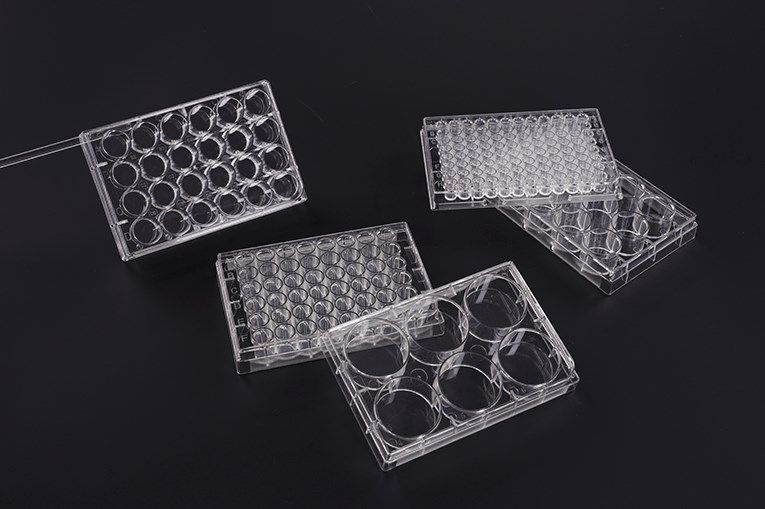
Flat Bottom Multiwell Plates: A Closer Look
One of the key variations in multiwell plates is the shape of the well bottoms. Flat bottom plates, as the name suggests, feature wells with a flat, horizontal bottom surface. This design offers several advantages:
Advantages of Flat Bottom Multiwell Plates
- Cell Adhesion: Flat bottom plates are well-suited for adherent cell cultures. The flat surface provides a stable and consistent substrate for cells to attach and proliferate. This is particularly important when working with cell lines that require surface adhesion for growth.
- Microscopy and Imaging: The flat bottom design ensures that cells lie in a single plane, making them suitable for microscopic observation and imaging. This is essential for live-cell imaging, immunofluorescence, and other techniques that require a clear view of cellular processes.
- Uniform Liquid Distribution: Flat bottom plates allow for even distribution of culture medium, reagents, and compounds across the wells, ensuring consistent conditions for all samples. This is crucial for obtaining reliable and reproducible results in experiments.
- Reduced Meniscus Effect: In flat bottom plates, the meniscus effect, which can affect the volume of liquid dispensed, is minimized. This ensures accurate dispensing of reagents and reduces the risk of experimental errors.
Applications of Flat Bottom Multiwell Plates
Flat bottom multiwell plates find application in various research areas, including:
- Cancer Research: These plates are commonly used to culture cancer cell lines and test the effects of anticancer drugs. The flat surface is ideal for observing changes in cell morphology and behavior.
- Stem Cell Culture: Stem cell research often relies on flat bottom plates to maintain pluripotency and facilitate differentiation into specific lineages.
- Neurobiology: Neuronal cells require a stable surface for proper growth and differentiation, making flat bottom plates crucial in neurobiology studies.
- Drug Discovery: Screening assays for new drugs or compound libraries benefit from the consistency provided by flat-bottom plates, helping to identify potential therapeutic candidates.
Conclusion
Multiwell plates, including flat-bottom plates, are pivotal instruments in the realm of cell culture and scientific research. Their versatility, compatibility with high-throughput applications, and standardized design make them indispensable tools in various fields of biology and drug development. Flat bottom plates, with their advantages for cell adhesion and imaging, are particularly crucial in studies involving adherent cell lines and microscopic observation. As technology advances, these plates will continue to evolve, contributing to breakthroughs in cell biology and drug discovery, and helping researchers unlock the mysteries of the cellular world.
